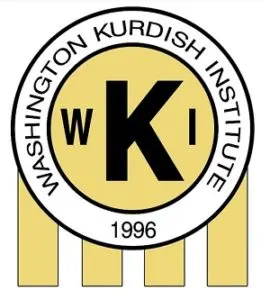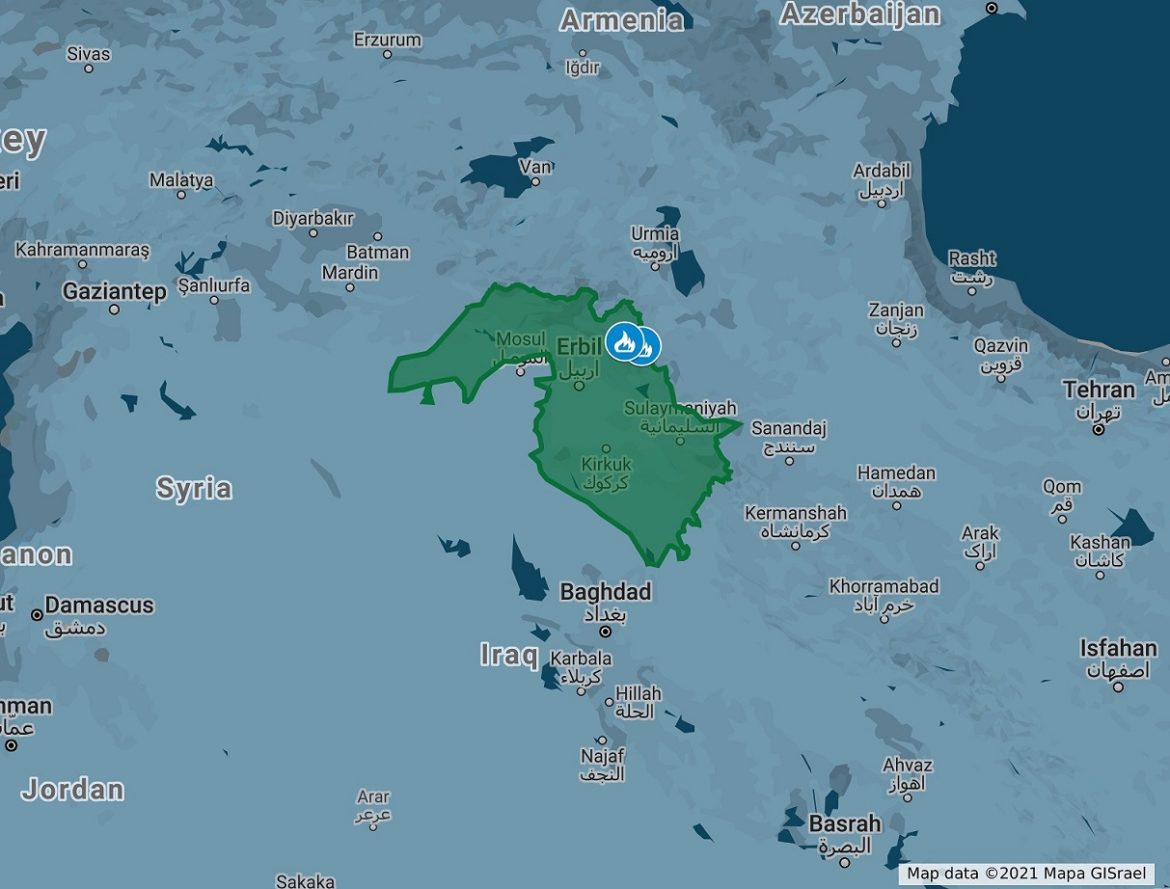Washington Kurdish Institute
September 14, 2020
Last week, commanders of the Iranian Revolutionary Guards Corps (IRGC) threatened attacks on the Iranian Kurdish opposition parties based in the Kurdistan Region of Iraq. The warning came from the commander of the IRGC, General Mohammad Pakpour, who vowed a “decisive and crushing” response to the activity of the Iranian Kurdish opposition parties. The following day, the commander of the Hamzeh brigade of the IRGC, Mohammad Taghi Osanloo repeated Pakpour’s threats by warning civilians to “stay far” from the Kurdish parties’ buildings. These direct threats come a month after the Iranian regime asked Iraq to expel the Kurdish opposition groups in Iraq, which are primarily based in the town of Koya in the Kurdistan Region.
On both Thursday and Friday, Iranian jets and suicide drones attacked areas of Kurdistan Region bordering Iran, targeting positions of the Democratic Party of Iranian Kurdistan (KDPI), one of the larger Iranian opposition parties. The attacks did not result in any casualties, but the KDPI officials warned of potential further aggression by the Iranian regime and the possibility of ground operations, similar to those Turkey launched in Iraqi Kurdistan.
The Iranian Kurds have long struggled with the brutal policies of the regime. Their political parties have been exiled for 42 years and have settled in Iraqi Kurdistan as a last option of survival. Yet, the Iranian regime has continued to target these groups inside Iraqi Kurdistan through various methods. For example, in 2018, Iranian long-range missiles hit the headquarters of the Iranian Kurdish parties, killing 18 and injuring 50, including senior opposition figures. In addition, assassinations of Kurdish opposition leaders and figures have been a main tactic of the Iranian regime since 1979. For example, Iranian intelligence officers (Ettela’at) assassinated Abdulrahman Ghassemlou, a Kurdish leader and former Secretary of the KDPI. After being invited to Vienna under the guise of peace talks with Iranian officials, Ghassemlou was killed by the regime for his role in leading opposition to the Islamic regime establishment. Following Ghassemlou’s ambush, Iranian agents also assassinated his successor, Sadegh Sharafkandi, and two of his colleagues inside a restaurant in Berlin. The assassination culture of the regime has continued; as recently as last month, a senior KDPI official was killed inside his hotel in Erbil.
The Cooperation Center for Iranian Kurdistan’s Political Parties (CCIKP), an umbrella organization uniting the Kurdish opposition parties, replied to the Iranian threats and accused the regime of creating issues abroad to “escape” the internal crisis and mismanagement they face inside Iran. Indeed the Iranian regime uses attacks on the Kurds as a tactic to distract the public from the economic issues they created and the poverty, unemployment, and isolation, which they have precipitated. By attacking the Kurds, the Iranian regime is replicating what Turkey has successfully done. In Turkey, when faced with an economic crisis, its authoritarian president Recep Tayyip Erdogan responded by launching wars on Syrian and Turkey’s Kurds, distracting the public from the issue and boosting nationalism among Turks to fight for “Turkish national security.” Erdogan succeeded in ethnically cleansing the Kurds of Syria. Some of this success can also be attributed to wrongful US policies. However, this tactic failed to abate Turkish economic decline and unemployment, which reappeared only a few months later. Erdogan has repeated this tactic on many occasions, but today he is running out of options and is now focusing his efforts on trying to shut down the only pro-Kurdish party in Turkey to ensure his continuation in power.
This same tactic has been utilized by the 42-year-old Iranian regime as the public has become exhausted from failed economic policies, countless human rights violations, and regional intervention and support of terror groups. In the past decade, on many occasions, millions of Iranians, including Kurds, have held massive anti-government demonstrations. However, as a result, thousands of Iranians were killed on the street by the IRGC, which has been designated as a terrorist group by the US. Inspired by Erdogan and his military invasion into the Kurdistan Region under the pretext of fighting the Kurdistan Workers’ Party (PKK), the Iranian regime appears to be doing the same by using the presence of Iranian Kurdish parties as a pretext to launch war on the Kurds, therefore, distracting its public and rallying nationalist support.
Both Turkey and Iran are undermining Iraqi sovereignty and the existence of the Kurdistan Regions, and most importantly, placing the US in an even more challenging position in Iraq. Moreover, the Iranian attacks come amidst the busy month of snap parliamentary elections in Iraq in which Iran is backing many of its Iraqi proxies to take more power and further pressure the US to leave the country, like Afghanistan.
Controversial US position
Since 2003, the US has voiced concerns over and rejected Iran’s meddling in Iraq, a reasonable approach toward a regime that destabilized Iraq and the region at large. However, when it comes to the Kurds, who have served as America’s true allies and friends, the policymakers have remained silent. For example, when Iran acted alongside the Iraqi forces in the aftermath of the independence referendum in unleashing its Iraqi proxies on the Kurds on October 16, 2017, the US sided with Baghdad and, thus, Iran as well. As a result, Kurds lost 50% of their territories, and the US lost significant leverage in the region. Today, those areas, known as the “Disputed Territories,” are lawless with strong ISIS (Da’esh) reemergence. If the US is against Iran’s intervention and aggression in Iraq, it should act without exception, like those we see for the Kurds. By remaining silent in the face of violence against the Kurds, the US is standing against its very same policy of “one Iraq ” that was implemented in 2003. The US has maintained a similar policy in Turkey, either remaining silent or taking Turkey’s side on the ongoing Turkish military operation in Iraq.
The Iraqi government is vocal with statements but has done little to prevent Turkish or Iranian aggression. For example, Baghdad could rally support among the UN’s Security Council to address the breaching of its borders by both countries and, yet, the Iraqi government has not done so. In addition, the US might heed Baghdad if the latter were serious about protecting its “Iraqis” including the Kurdish people. In the face of apparent abandonment by Iraq and the US, the future of the Kurdish region remains unclear. Unless these countries act to protect the Kurdish region, the recent Iranian aggression will further undermine its stability and very existence.

